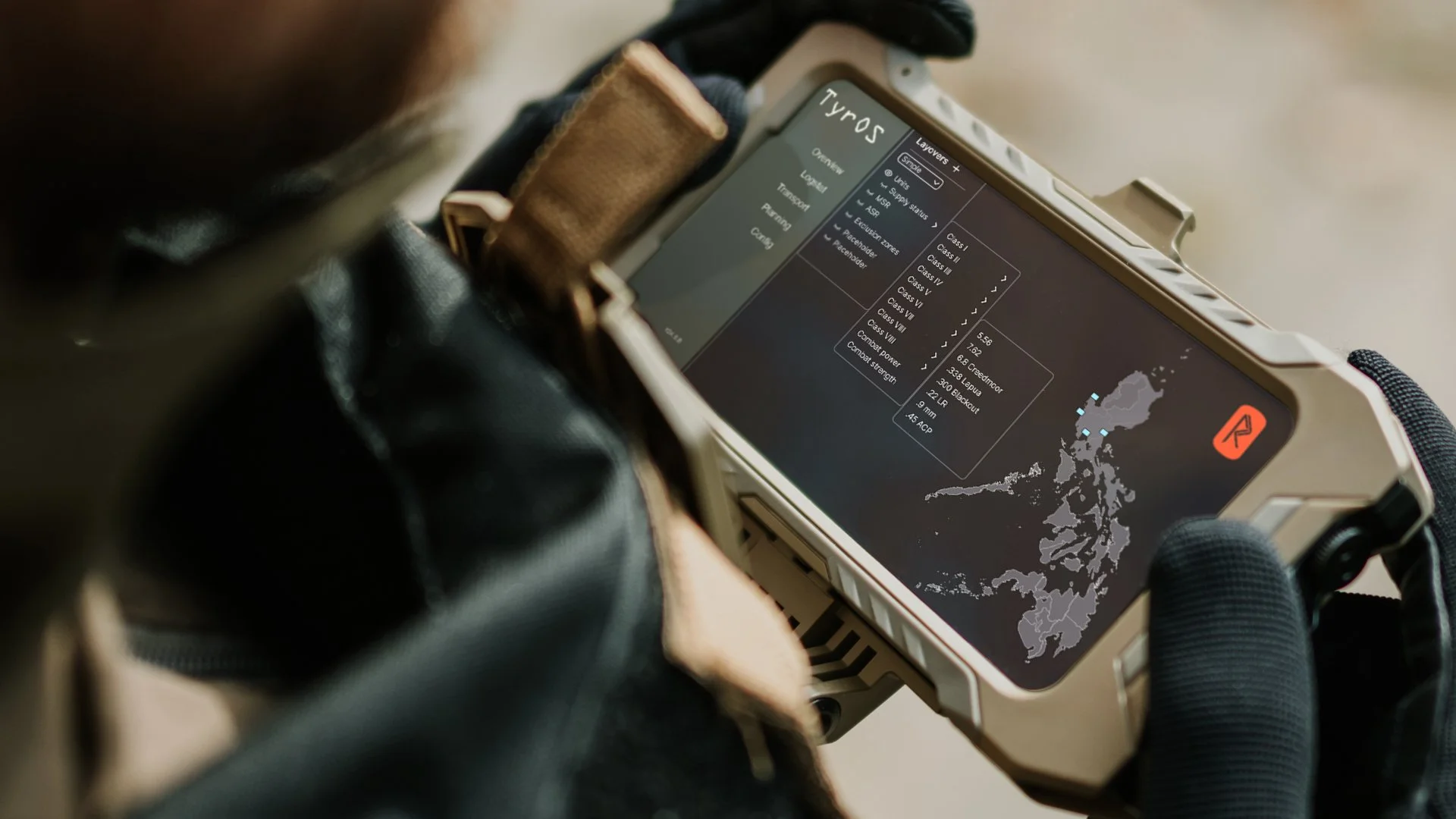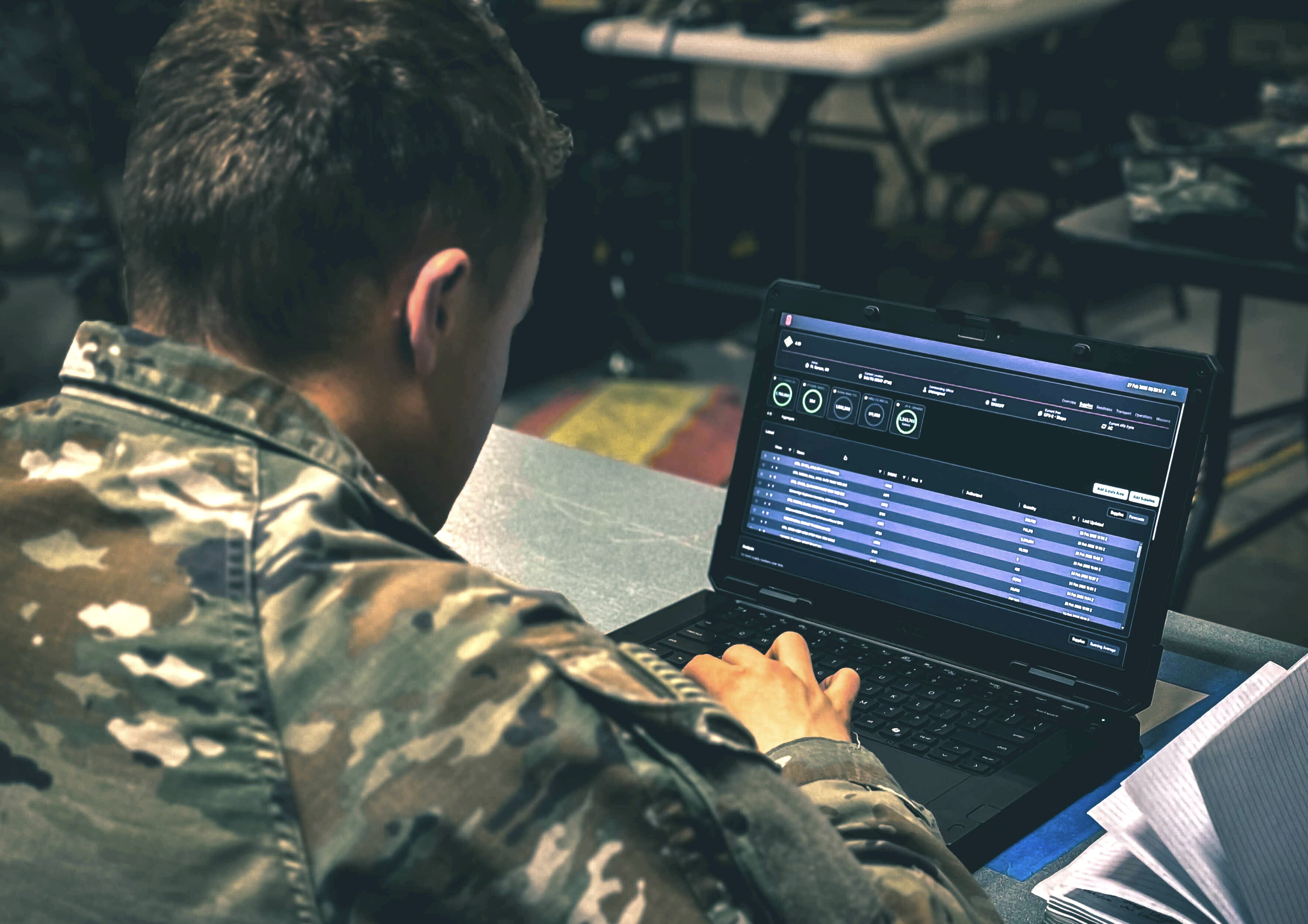Rewriting the Future of Military Logistics With Edge-First Predictive AI
The whiteboard in a makeshift supply yard outside Subic Bay tells the story. Ammunition counts scrawled in fading marker, unit designations crossed out and rewritten, phone numbers for other supply sergeants taped to the corner. This is how American forces track mission-critical supplies in the Philippines. The same way they did in Vietnam.
At a nearby airfield, a section of F-35 fighters taxi on the runway, each carrying more computing power than the entire Apollo program, followed by a formation of autonomous collaborative combat aircraft. Inside the supply area though, logistics runs on spreadsheets, phone calls, and notebooks. The disconnect has become impossible to ignore.
We've spent the last three years in places like this, watching Marines update whiteboards while hundreds of proliferated low earth orbit satellites pass overhead. We've embedded with Army units during exercises, observed Navy supply chains in the Pacific, and listened to Air Force logisticians explain why their state-of-the-art enterprise systems do not work in real world operational environments. The pattern is always the same. We have amazing weapons and resources but are constrained by antiquated logistics systems.
The irony of this situation cuts deep. The United States has spent billions developing stealth technology to evade enemy radar. We have built submarines that can remain undetected underwater for months. Yet our supply chains broadcast their presence through predictable patterns and constant data streams that any competent adversary can intercept, jam, or destroy. The nature of modern warfare has evolved with the speed of modern technologies. Why is it that our operational supply chains still move at the pace of human phone trees? This gap creates vulnerabilities that adversaries actively exploit. It’s time to change the equation.
An Undeniable Shift in the Combat Theatre
History teaches harsh lessons about logistics failures. Patton's Third Army ground to a halt in 1944 not from German resistance but from outrunning supply lines. The most capable fighting force in the European theater sat idle while fuel trucks crawled across France. The Wehrmacht discovered that logistics designed for European distances couldn't sustain operations across Russian expanses. Their sophisticated rail networks and supply depots worked perfectly in Poland and France. They failed catastrophically in the Soviet Union. When winter arrived and partisans cut supply routes, the world's most advanced military at the time found itself fighting with inadequate resources.
The problem is still haunting military forces around the world. It became undeniable during recent joint NATO exercises in Eastern Europe. Units arrived with logistics platforms that worked perfectly at their home bases. Two hours into simulated combat, electronic warfare units flipped a switch and the entire digital infrastructure went dark. What followed was chaos dressed up as confusion.
Supply sergeants who moments before could track every bullet down to the serial number found themselves staring at frozen screens, their real-time visibility replaced by the spinning wheel of a lost connection. Requests for ammunition went nowhere, accumulating in digital limbo while units burned through their reserves. The exercise controllers didn't need to simulate destroying supply depots or ambushing convoys. They demonstrated something far more devastating. Cutting communications could transform America's logistics superiority into paralysis.
American military doctrine acknowledges these realities while procurement ignores them. Plans emphasize distributed operations across vast distances. Systems get funded assuming reliable connectivity and uncontested supply lines. Traditional defense contractors excel at enterprise solutions for garrison use. These platforms generate impressive metrics and beautiful dashboards. They impress acquisition boards with features designed for conference rooms, not operational users who know the battle realities. They collapse the moment real-world conditions intrude.
Thinking Outside of the Box
At Rune, we have chosen a different path. Instead of building better cloud computing, we abandoned cloud-reliant thinking entirely for battlefield logistics. Our edge-first architecture embeds intelligence directly where decisions get made. Systems function independently when networks fail, synchronizing only when communications allow.
The approach mirrors how military units actually operate. Combat units don't wait for division headquarters to respond to enemy contact. They assess situations using local information, make decisions, and report results when possible. We built logistics systems that function the same way.
Consider a resupply mission in the Pacific. Currently, Marines manually calculate ammunition needs based on planned operations. They submit requests through multiple systems, each one requiring connectivity. A supply sergeant might spend hours coordinating via radio, email, and secure messaging apps. If any link in this chain fails, the process stops dead in its tracks.
Rune’s edge-first architecture transforms this equation entirely. Instead of reaching out to distant servers that may not respond, the device tracking supplies becomes its own intelligence center that can predict consumption patterns through onboard analytics that keep running whether the satellites work or not. Terrain data lives on the device itself, allowing route optimization even when GPS goes dark, while mesh networking creates a web of communication between units that enemy jamming can't fully break. The beauty of the system lies in its stubbornness. Communications can fail and satellites can go dark, but the logistics keep flowing.
The technology to build this platform already exists. Modern tactical computers contain more processing power than data centers from a decade ago. Machine learning algorithms run on hardware that fits in a backpack. Mesh networking protocols maintain connectivity even when central nodes go down. We simply applied these capabilities to logistics rather than assuming constant connectivity.
Enter TyrOS: The Operating System for Tomorrow's Battlefield
As unmanned ground vehicles and aerial resupply drones proliferate, coordination becomes even more critical. Something must orchestrate these autonomous systems and that something cannot depend on reaching data centers thousands of miles away. Rune’s TyrOS platform provides an orchestration layer functioning at the edge, managing both human decisions and machine operations without cloud dependency.
Picture a forward operating base under electronic attack. Communications are jammed. Satellites are contested. A traditional logistics system would be blind and deaf. With TyrOS, autonomous supply drones continue their missions locally using pre-loaded intelligence. Ground vehicles navigate using edge-processed terrain data. Human operators see a common picture built from local sensors, not distant servers. When one node updates its threat assessment, the entire network adapts without touching a cloud server.
We bring advantages traditional contractors lack. Our team combines battlefield experience with Silicon Valley engineering practices. We've stood in these real-world operational environments and experienced the frustration of using systems that assume perfect conditions. We are leveraging our experience to build platforms that integrate with existing military hardware without requiring infrastructure overhauls. Most importantly, we design systems matching how warfighters actually operate rather than forcing new workflows.
The stakes transcend technology preferences. Peer adversaries have spent decades studying American vulnerabilities. They understand that breaking supply chains achieves more than destroying combat units. Fighter squadrons without fuel pose no threat. Artillery batteries without ammunition become liabilities. The most sophisticated weapons become expensive paperweights without the logistics to sustain them.
American forces are preparing for future conflicts where our superiority cannot be assumed in the way it once was. In the digital world, communications will be contested from the first hour and supply lines are targeted systematically. Traditional logistics approaches that assume benign environments will fail catastrophically. The choice we face as a nation is adaptation or obsolescence.
Back in the Philippines, the whiteboard continues its analog duty. Markers squeak across its surface, updating counts that determine mission success. Soon, those same supplies will flow through systems that predict needs before humans recognize them. These systems will function whether or not they are connected to distant servers. They will treat logistics as warfare and not administration.
We've built this technology. We've proven it works where traditional systems fail. We've watched it function over degraded networks and contested electromagnetic spectra. The path forward requires institutional courage more than technological breakthroughs. The marker squeaks one final time. Outside, heat shimmers off the tarmac where advanced fighters wait for fuel tracked on whiteboards. The future of warfare depends on closing this gap between capability and logistics. We're ready to close it.



